Are you looking for a new plant that will turn heads, but won’t require a ton of care and maintenance. Introducing the String of Bananas!
These fun succulents are drought-tolerant and thrive on neglect, so you can lean back and enjoy its quirky looks without having to fret over keeping it healthy. Let’s get to know the String of Bananas a little better in this ultimate care guide.
Table of Contents
Background
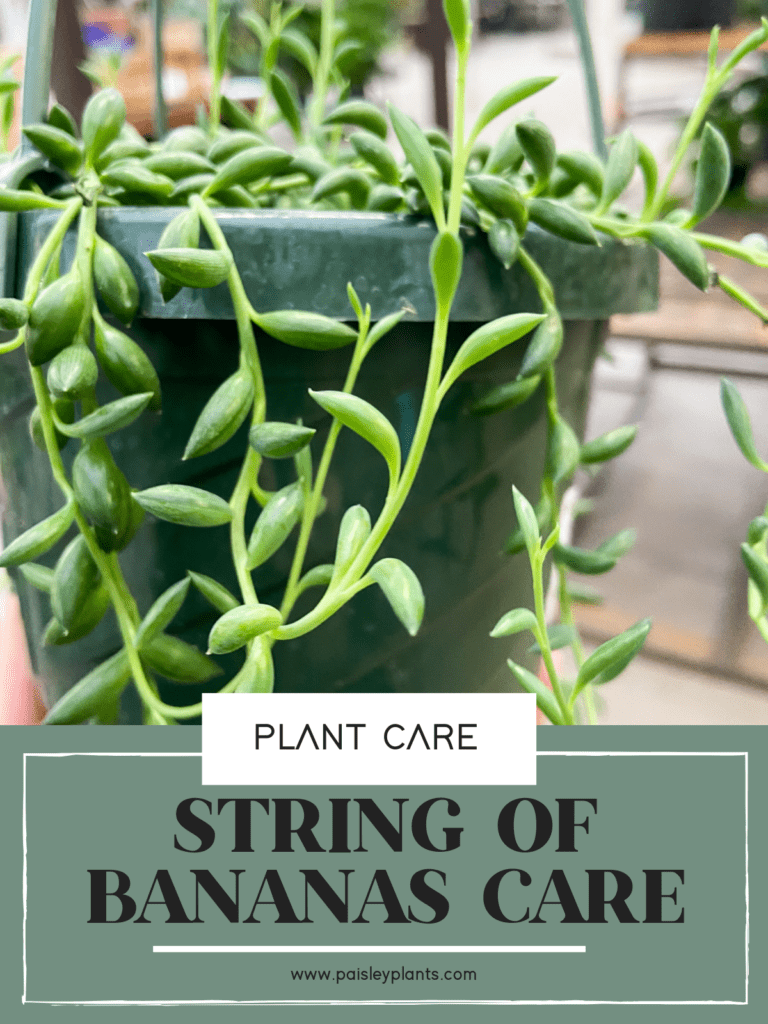
This post includes affiliate links.
The String of Bananas (Senecio radicans) is a close relative to the string of pearls and string of fishhooks succulents. The major difference between the two plants is the unique shape of the leaves.
The String of Bananas gets their name from their fleshy, oblong leaves that strongly resemble bananas. The String of Pearls have pea shaped, round leaves. String of Pearls is also a bit harder to grow. If you’re new to succulents, master the String of Bananas before moving on to the String of Pearls.
Native to the southern region of Africa, these plants are native to hot, dry climates, similar to most other succulents. It’s a member of the Asteraceae family and shares this family with other well-known plants such as the daisy and sunflower.
Though rare for an indoor-grown houseplant, the string of bananas actually are capable of producing their own daisy-like flowers.
Despite their uncanny appearance, I strongly advise you do not eat the string of bananas. This plant is known to be toxic to both humans and animals. Please exercise extreme caution and keep this houseplant away from curious children and pets.
String of Bananas Plant Care
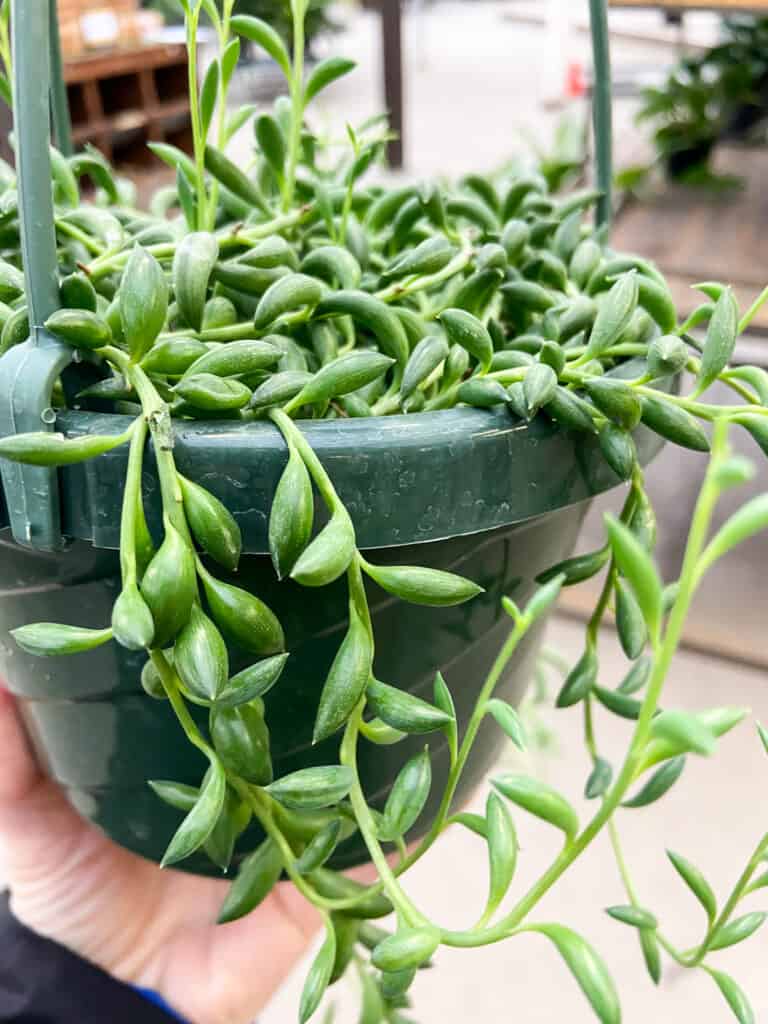
Sun & Light
The string of bananas plant enjoy a full day’s worth of bright, indirect light. Make sure to give your plants at least six hours of light per day.
If you struggle with a location in your home that provides adequate light, try a grow light! They’ve been known to respond well to grow lights.
Soil Type
Like many succulents, the string of bananas requires a well-draining soil in order to live a healthy life. You can purchase a pre-mixed cactus or succulent soil mix from your local garden retailer and this will work perfectly.
If you prefer to mix your own soil, then a combination of 2 parts potting soil, 1 part perlite, and 1 part pumice. This mix will be fast-draining while still maintaining an even level of moisture to sustain your plant.
Water
The string of bananas is a very drought tolerant plant, as most succulents are. You should allow the soil to dry out before you water your plant.
Always remember it’s better to under-water this particular plant rather than overwater. Too much water is one of the worst things for these plants!
Fertilizer
While the string of bananas does not require a fertilizer routine, their growth can definitely benefit from some light fertilizing. Once a month during the spring and summer (when your plant is actively growing), apply a diluted, organic fertilizer to your plants.
Great examples of organic fertilizers include worm compost, fish emulsion, or liquid kelp.
Temperature & Humidity
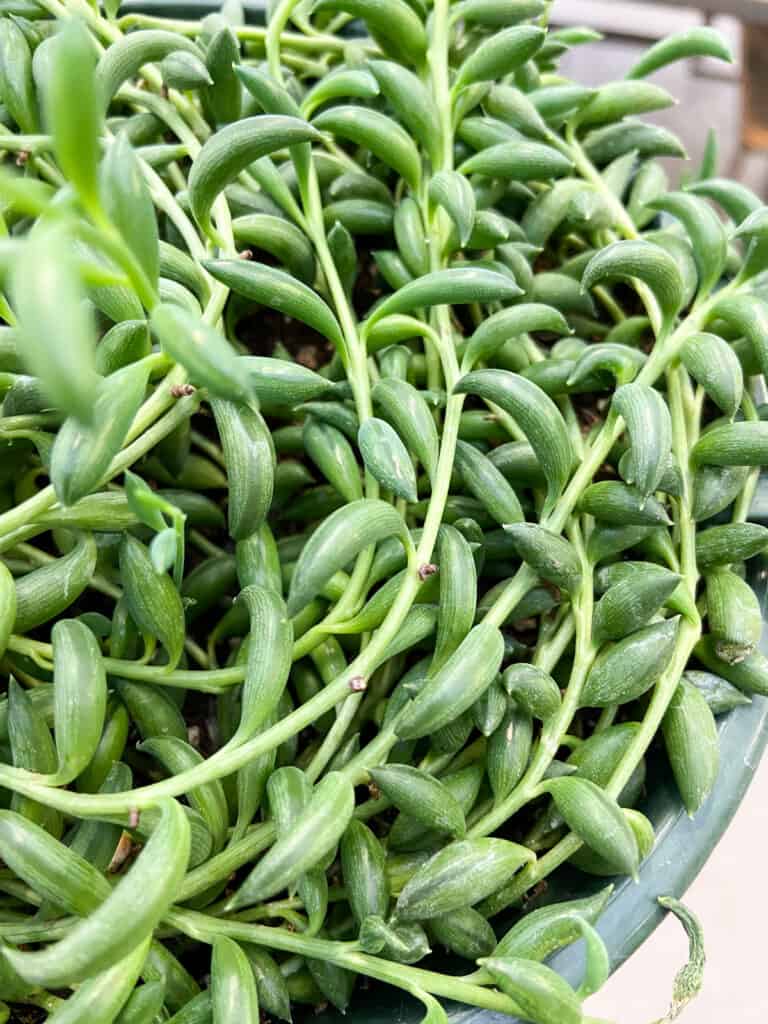
The string of bananas is very forgiving of normal household temperatures, preferring to live in a temperature range of roughly 65° F to 80° F, which is very attainable for most households. Avoid placing your plant near any particularly frigid areas of the home such as near air conditioning vents or drafty windows.
Just like humidity levels, it’s tolerant of regular household humidity levels, despite being native to the dry regions of southern Africa. Avoid keeping your plant in areas of the home with higher humidity levels, such as kitchens or bathrooms.
Choosing a Container & Repotting
When selecting a pot, please keep in mind that this is a succulent plant and will require a well-draining pot. Select a planter that has at least one drainage hole at the bottom.
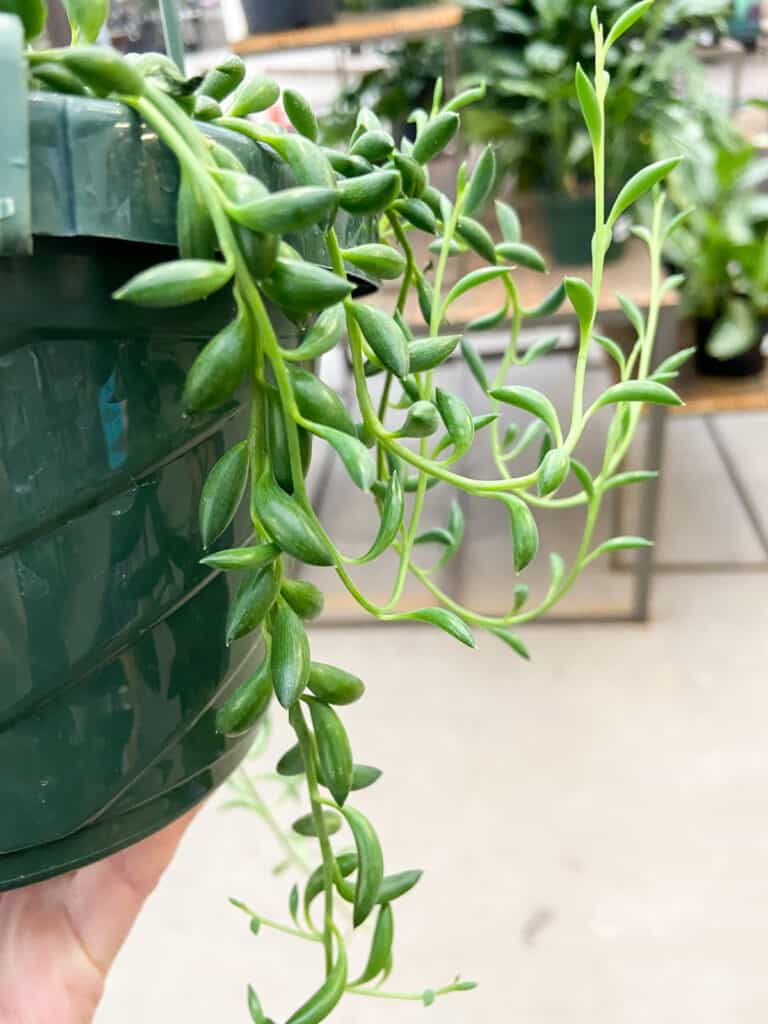
In addition, the material of the pot makes a world of difference as well. Materials such as unglazed ceramic and terra cotta are very porous, and will helpfully soak up any excess water your plant does not need.
String of bananas enjoy being a bit pot bound, so don’t worry about having to repot them yearly. Instead, it’s best to repot your plant once every two years to refresh the old soil that’s in the pot.
Pruning & Maintenance
Pruning is an excellent way to not only maintain the overall look of your succulent, but to encourage new growth as well. I always recommend using sharp, sterile pruning shears before you cut into your plant. Simply wiping them down with rubbing alcohol will help stop the spread of bacteria.
I like to begin by pruning any dead or damaged foliage. Dead or damaged foliage will do your plant no favors; it will only hinder any new growth. Snip these unnecessary parts to encourage new vines to grow.
You can also clip healthy parts of the plant if you feel that your plant has become too long or leggy. Don’t throw those healthy vines away, instead, you can learn to propagate your plant to create multiples.
How to Propagate
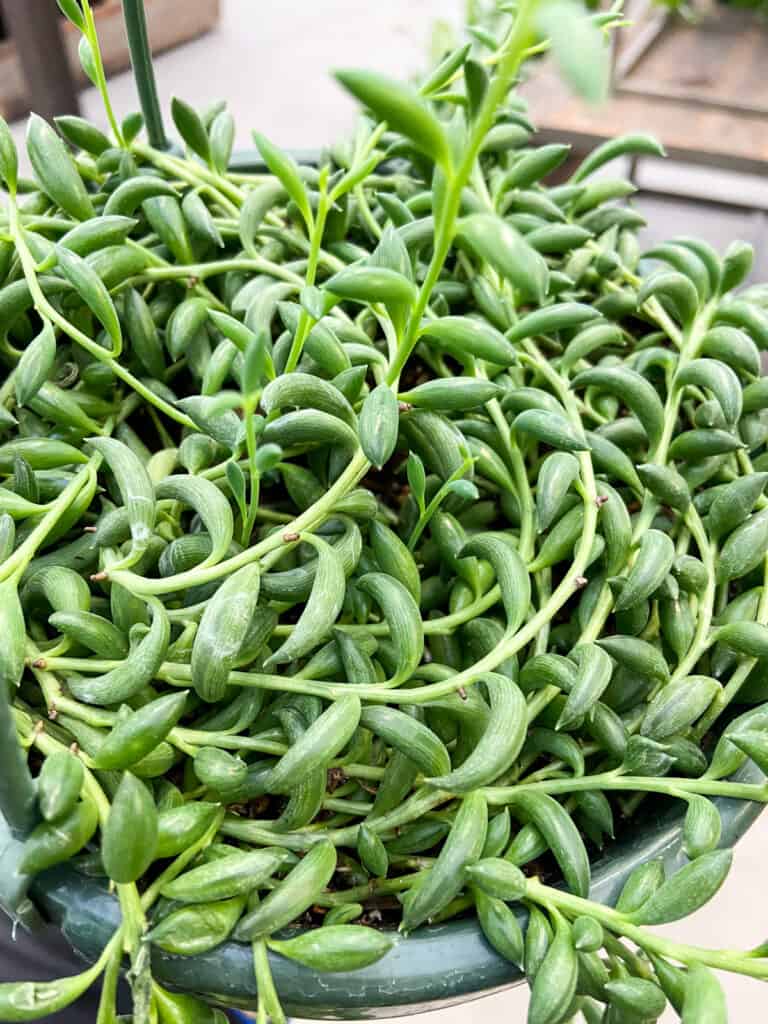
String of bananas can easily be propagated by using plant cuttings. Follow these easy steps to multiply your succulent.
- Take a healthy clipping from your succulent. This stem should be at least 5 to 6 inches in length.
- Remove the bottom leaves from the around the cut-end of the vine.
- Allow your cutting to dry out until the cut-end forms a callous. This can take between 3 to 7 days.
- Fill a well-draining pot with succulent-specific soil. Mist the soil so that it remains evenly moist.
- Put the cut-end of the succulent into the soil. Make sure all the leaves are above the soil to allow for air circulation.
- Keep the soil damp consistently as your new succulent tries to establish roots. You’ll know your propagation was successful when you start to notice new growth forming.
- You can also test to see if the propagation was successful if you give the stem a gentle tug and you’re met with resistance. This is a great indicator that the stem has sprouted roots and has established.
Pests
String of bananas are not typically prone to pest infestations, though it is always best to keep a close eye out for common sap-sucking houseplant pests. Examples of these pests include aphids, mealybugs, scale, and spider mites.
While these pests are incredibly inconvenient, they are easily treatable when caught early. Spraying neem oil on your plants is an organic, yet effective method of pest prevention and extermination.
An all-purpose insecticidal soap will do the trick as well. Mealybugs leave a cottony residue on the foliage of houseplants. This can be dealt with my dabbing rubbing alcohol on the affected areas.
In addition, make sure to prune any areas of foliage that have been damaged by the pests; this will help encourage new growth in place of the foliage that was lost.
Diseases

Just like pests, the string of bananas are not prone to many specific diseases. Like all succulents, it is important to keep a watchful eye out for root rot. Root rot is the result of improperly overwatering your succulent. Common symptoms of root rot include yellow, wilting foliage.
Root rot is a terrible, often fatal fungal disease that affects succulents such as the string of bananas. While treatment is possible, it is much easier to prevent this occurrence from ever happening.
Always keep in mind that it would rather be under-watered than over watered. Wait until the soil has dried up completely before applying more water to your succulent.
I like to do the finger test when watering my succulent. Put your finger in the soil. If the soil is wet, don’t water it. If it’s dry, go ahead and water it!
FAQ
Yes, string of bananas are considered a rare plant. Though, while they are rare, they are by no means difficult to care for.
No, the string of bananas and the string of dolphins are two separate plants, though they are closely related and belong in the Asteraceae family.
The string of dolphins is a hybrid of the string of pearls and the hot dog cactus (Senecio Articulatus), both members of the genus Senecio. While the string of bananas and string of dolphins look very similar at first glance, their leaves have a striking difference.
The string of dolphins’ leaves are oblong, just like the string of bananas, but they have a small bump on the edge of their leaves, which bares a striking resemblance to a dolphin’s fin!
The string of bananas is considered to be a fast-growing plant. With meticulous care, you can expect it to reach its mature height within a few years.
Where to Buy
The string of bananas succulent is quirky, weird, and rare, but by no means is it a hard plant! If you’re looking for a fun plant to add to your indoor garden, then look no further than this fun succulent.
Next, be sure to check out some other fun string plants like the string of fishhooks or the string of turtles!

